World market of modern large landing ships
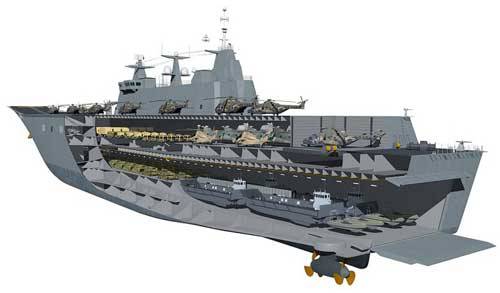
In general, we can conditionally distinguish three main subgroups of modern large landing ships that have export prospects:
- universal landing ships with a total displacement of 16 to 000 tons with extended aviation opportunities;
- multifunctional landing-helicopter ships-docks (DVKD) with a full displacement from 9000 to 20 000 tons, focused on solving the maximum possible number of tasks;
- “cheap” amphibious transport docks (DTD) and small amphibious helicopter ships-docks with a full displacement from 6000 to 13 000 tons, focused mainly on solving airborne transport problems.
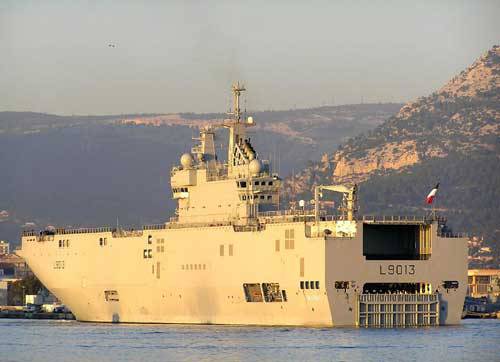
In fact, the first two subgroups are close in ideology, in Western terminology, they practically do not differ, merging into a single LHD class. As new “transitional” subclasses, we can single out hybrid vessels combining landing-transport capabilities with the tasks of supply vessels, and the number of such units will increase in the future.
Despite the boom in the acquisition and construction of modern large landing ships, their market remains very small in quantitative terms. This is especially true for UDC, the cost of construction, staffing and operation of which are so high that they make the contract for the supply of such a ship in terms of its uniqueness comparable to the contracts for the construction of full-fledged aircraft carriers. In view of this, the maximum that the “average” fleets of the world can afford in the amphibious category is the DVKD. The proposal of this particular subclass of ships has been developing most actively lately.
We can say that the global economic crisis has seriously “cooled” the market of large landing ships. There is intense competition and a clear oversupply. At the same time, the specificity (and often uncertainty) of customer requirements leads to an unusually wide range of project proposals, as well as to the desire to create purely national non-unified projects. Obviously, this is now a buyer's market, and Russia, who wants to buy as many as four MDCs, should not be forgotten about this.
Since the article by Ilya Kramnik gives an idea of the universal landing craft, I will proceed to the description of their “brothers”.
USA
It should be noted that the transfer and disembarkation of cargo and equipment by Americans is now assigned to specialized DVKD, considered as a kind of second-tier ships after the landing with UDC. Since 2000, the San Antonio-type DVKD is being built in the United States, replacing Austin-type ships. The construction is carried out by Northrop Grumman in Ingalls Shipbuilding and Avondale Shipyard owned by the shipyards, the cost of one ship is from 1,4 to 1,7 billion dollars. Five units (LPD 2006 - LPD 17) have been commissioned since 21, another four are in construction (LPD 22 - LPD 25), and it is planned to have 10 or 11 ships in total by 2014 year. The San Antonio type DVKD are large ships with a full displacement of 25 thousand tons with a diesel power plant. The architecture of the ship used technology Stealth. The ship is capable of transporting a 704 man, a significant amount of equipment and is nominally equipped with a hospital. In the dock chamber there are two air cushion boats (LCV) of the LCAC type, and in the hangar there are two CH-46 helicopters or one CH-53Е or one convertible plane MV-22B.
To replace the current American DTDs, it is planned to begin construction of promising amphibious transports under the LSD (X) program with a total of 2020-11 units from 12 onwards. The ship’s total displacement is estimated at 22 thousand tons, the preliminary cost is 1,2 billion dollars per unit.
However, all the above ships of the US Navy are of interest mainly as the most advanced and sophisticated units of the modern development of the landing craft class, since they are not offered for export and in principle have no export prospects due to compliance with specific American requirements and high cost. At the same time, the old dockships being withdrawn from the US Navy find definite demand. Two former American DTMs of the Thomaston type were leased by Brazil in 1990, Taiwan received the DTD LSD 1999 Pensacola in Taiwan in 38, and India acquired the LPD 2006 Trenton DVKD in India in 14.
UNITED KINGDOM
For the replacement of two old DTDs of the Fearless type, the British fleet ordered 1996 and, in 2003-2004, commissioned the LPD Albion and Bulwark, built at the BAE Systems shipyard in Barrow-in-Furness. These are rather large (full displacement - 18,5 thousands of tons) ships of the traditional “dock” architecture, having a large dock (can accommodate four landing craft of type LCU or one KVP LCAC) and focused mainly on the transport of equipment (capacity - up to 67 of various machines, including the 31 tank, and the 300 man landing). At the same time, in the presence of an extensive helicopter deck, the permanent basing of helicopters on ships is not foreseen, since the DVKD data must interact with the helicopter carrier Ocean. Albion and Bulwark also have equipment installed for use as control ships. The ships are equipped with diesel-electric power plants.
In the years 2000-2001, the United Kingdom ordered four Bay DTDs (LSDs) of the Bay type, which were built in pairs by Swan Hunter in Tyneside and BAE Systems in Govan and transferred to Govan as a cheaper option the fleet in 2006-2007. The project was developed by Swan Hunter based on a series of landing ships Enforcer Dutch company Royal Schelde. The main task of Bay-type ships (total displacement - 16,2 thousand tons) is considered to be the transportation and unloading of goods and equipment, mainly in equipped ports. The docking chamber holds only one LCU landing craft, with a cargo capacity of up to 150 vehicles or 24 tank, and landing capacity - 356 people. Aviation capabilities are represented by one take-off and landing platform for heavy helicopters. The cost of the ships was only 95 million pounds per unit, and in general, these DTDs are a characteristic type of modern inexpensive airborne transport ships, which are becoming more widespread even in third world fleets.
NETHERLANDS
At the beginning of the 90-ies, the Dutch and Spanish shipbuilders jointly developed a multifunctional full-fledged naval command for the fleets of both countries, on which the ships Rotterdam (commissioned in 1998-m) for the Navy of the Netherlands and Galicia and Castilla (1998-2001) for the Navy were built. Of Spain. Rotterdam made a great impression on naval specialists from all over the world. This DVKD not only served as a direct prototype for the creation of similar ships in a number of other countries, but also marked the beginning of a boom of amphibious construction.
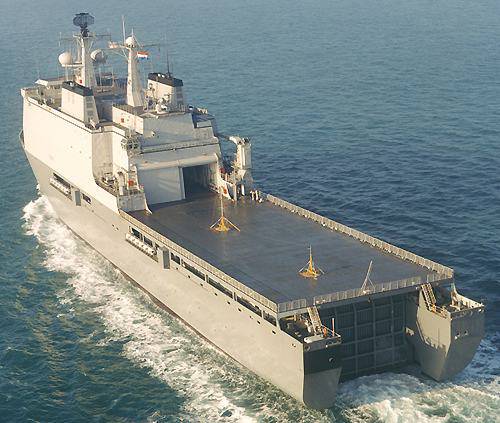
With a full displacement of 12 750 tons, Rotterdam has a typical “transport and docking” architecture, having a high degree of automation, considerable landing capacity (588 marines and 170 units of equipment) and significant aviation capabilities. It has a large flight deck and a hangar in the superstructure for six NH90 medium-sized helicopters or four AW101 heavy helicopters. At the same time, anti-submarine helicopters can be based on the ship, for which it is equipped with aircraft ammunition and hydroacoustic buoys. Rotterdam is adapted to perform search and rescue tasks, deliver humanitarian supplies, ship control, hospital ship, floating base of mine-trawling forces, etc. DVKD built according to commercial standards and is equipped with an electric power installation.
In 2000, the Dutch government decided to replenish the country's naval forces with the second improved PKCD type Rotterdam. The ship Johan De Witt was built by the Damen group with the manufacture of the hull at its shipyard in Galati (Romania) followed by the completion of the Damen Schelde in Vlissingen and was handed over to the fleet in 2007 year. It differs from the lead ship Johan De Witt in size (the total displacement brought to 16,8 thousands of tons), which made it possible to increase the size of the dock chamber, bring the amphibiousness to 700 people, and place the naval control center on the ship. The electric power plant is supplemented with propellers.
Relying on the experience of creating ships Rotterdam, the Royal Schelde shipyard (now Damen Schelde) in 90-s has developed and is now promoting to the market a whole range of LPD (Enforcer) that includes 12 projects of various sizes, both dock and aircraft carrier ( UDC) architecture. Although the largest projects of the Enforcer series did not find customers, one of the “junior” variants became the basis for Bayland-type DTDs. In 2009, the Enforcer LPD 8000 project was selected by the Chilean Navy as the basis for building one ship (9000 tons, landing craft - 500 people) at a national shipyard.
At the end of 2009, the Dutch Defense Ministry issued Damen a contract for 365 million euros for the construction of a multipurpose supply vessel Karel Doorman with a full displacement of 27,8 thousand tons. This is an interesting hybrid of DVKD with an integrated supply vessel, designed to solve a wide range of tasks in support of landing operations and support of naval combat operations. The vessel is equipped with a dock chamber, cargo decks 1730 m2, a large hangar for six NH90 helicopters or two CH-47 helicopters, as well as significant volumes for the transport of goods and fuel. The Karel Doorman will be built in the same way as Johan De Witt, and should be completed by 2014.
Another Dutch developer of landing craft projects is IHC Merwede. She created a project for a relatively small (full 9000 tonnes displacement) multi-purpose ship Canterbury, which is essentially a compact DVKD, ordered by New Zealand. The basis for Canterbury was a civilian ro-ro ship, it was built at the IHC Merwede shipyard in Rotterdam with the extension of Tenix in Australia and was handed over to the customer in 2007 year. The ship does not have a classic dock - two amphibious boats of the LCM type descend through the ramp in the stern and are loaded afloat with the help of 60-ton cranes. Canterbury assault capability - 360 man and 54 wheeled vehicle units. The hangar provides accommodation for four NH90 helicopters.
GERMANY
In 2009, in Germany, a plan was developed for building a fleet before 2025 (Flotte 2025 +), which provides for the construction of two UDC Joint Support Ship (JSS) and two multi-purpose dock ships Mehrzweckeinsatzschiffs (MZES) - the latter are designed to play the role of amphibious transport, floating bases and supply vessels. At the same time, for the UDC of the JSS type, there are demands for transportation of at least 800 people of personnel with equipment, which, according to German estimates, will require ships of 27-30 displacement of thousands of tons. As an alternative, there are three JSS with a capacity of 400 people with equipment at a full displacement of about 20 thousand tons. Due to the apparent high cost of these projects, the final decision on their implementation was postponed until 2016.
In the last decade, Blohm + Voss (now part of ThyssenKrupp Marine Systems - TKMS) has developed and is promoting a series of DVKD concepts (and in fact even UDC) MRD150 / MHD150 / MHD200 (the figure means total displacement in hundreds of tons) original "semi-avianosnoy" architecture. The MHD150 variant is capable of transporting up to 776 marines, has a dock for two LCM boats or one KVP LCAC, and can also provide for the NH11 helicopters to be permanently stationed in the 90 hangar. At the same time, the electric power installation allows speeding up to 22 nodes. The ships of these projects were offered to a number of customers (in particular Portugal and South Africa), but orders did not follow.
A further development of these projects was the proposed TKMS project of a modular multipurpose vehicle MEK MESHD (Multi-role Expeditionary Support Helicopter Dock) - a kind of UDC, capable, besides solving amphibious tasks, to also perform the functions of transport and integrated supply ship. Its full displacement reaches 21 thousand tons, while the internal volume of the ship can vary, transforming to the needs of helicopter hangars (with accommodation to a maximum of 14 helicopters NH90), decks for transportation of equipment and goods, hospitals, etc. The project MEK MESHD is offered in as the basis for future German JSS ships.
ITALY
The first step towards the development of modern amphibious ships in Italy was the creation of DVKD original design type San Giorgio. With a total displacement of all 8000 tons, this ship has a carrier architecture with a solid upper flight deck and very high transport capabilities (up to 400 people with equipment), although due to the lack of a hangar it does not provide a permanent home base for helicopters. San Giorgio can be used as a training ship, and from the very beginning was guided by the likely use in humanitarian missions. In the 1987-1994, three DVKDs of this type were introduced into the Italian Navy — San Giorgio, San Marco, and modified San Giusto. Initially, they had a nasal ramp for the direct landing of equipment on the shore, but according to the operating experience, such a method was considered inexpedient.
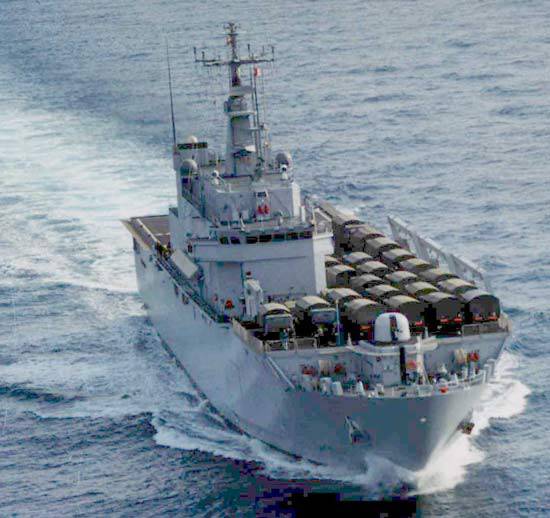
At the beginning of 2006, the 15-year plan for the development of the Italian fleet was announced by the Ministry of Defense of the country, according to which, before 2020, it is planned to replace three San Giorgio FSCs with ships of the same class but greater displacement, and the Italian light aircraft carrier Guiseppe Garibaldi is supposed to be replaced by a larger UDC (LHA) capable of carrying F-35B aircraft.
SWEDEN
In 2008, the Swedish government decided to build two multipurpose ships for the national fleet under the designation L10, which are scheduled to be commissioned in 2014-2015 years (although, perhaps for financial reasons, the matter will be limited to one). The project is being developed by the Swedish company Saltech. Ships must solve the problem of transportation and disembarkation of troops, as well as perform the role of supply vessels and floating bases. The total displacement of the L10 will be 13 430 tons, the area of the cargo decks is 2150 м2, the landing capacity is 170 people, in the hangar two NH90 helicopters should be based. The dock chamber is absent, but the assault assault boats of the Combatboat type are brought up to 12, with their descent both with a slip and a crane.
JAPAN
The national naval forces of the country in the 1998-2003 years were introduced three DVKD type Ousumi national development, built by the Mitzui shipyards in Tamano and Hitachi in Maizuru and structurally close to the Italian San Giorgio. The Japanese ships have a total displacement of 14 thousand tons, they are equipped with diesel power plants and have aircraft-carrier architecture, while the underdeck hangar is absent and the basing of helicopters (normally two CH-47 and two SH-60) is provided only deck. In the dock chamber is located two KVP LCAC. The landing capacity is 330 man and up to 40 armored vehicles (including up to 10 tanks).
SOUTH KOREA
This country became the world's third largest full-fledged amphibious assault ship (after the United States and France), introducing the Dokdo UDC, designed and built by Busan in Hannin Heavy Industries, into the fleet in 2007. With a total displacement of 19 thousand tons, the Dokdo has a carrier architecture, a dock chamber with two LCA CWPs and a underdeck hangar, which can accommodate up to 10 UH-60 helicopters. The landing capacity is 720 man and up to 40 units of equipment (including six tanks). The ship carries considerable defensive armament. Diesel EI provides travel speeds up to 23 nodes.
In general, the concept of the UDC Dokdo is of interest, since, apparently, unlike similar ships of other countries, it is not focused on overseas expeditionary operations, but on operations in coastal waters. The South Korean fleet plans to have three such UDCs, considering them as flagship units of the three naval strike groups being formed. This also refers to the possibility of providing the F-35B aircraft to be based on them.
Daewoo, a South Korean corporation, developed an export project for an inexpensive DVKD, according to which Daesun Shipbuilding in Busan owned the shipyard built Indonesia for 2003 in the year for just 35 million dollars the Tanjung Dalpele ship, intended mainly for use as a hospital ship. Its total displacement is 11,4, thousands of tons, it is built according to civil standards, but it has all the hallmarks of a modern DVKD, including a dock chamber for two LCM type boats, an extensive helicopter deck and a hangar for the permanent deployment of two Super Puma helicopters. The landing capacity - 518 man, provided the acceptance of a significant amount of equipment, including 13 light tanks. In 2004, Indonesia signed a contract worth $ 150 million to build four ships of the same modified project with the same characteristics already for use as full-fledged amphibious ships (Makassar type). Two DVKDs were manufactured by Daesun Shipbuilding in Busan and handed over in 2007, and the other two were built under license from the Indonesian state association PT PAL in Surabaya for transfer to the fleet in 2009-2010. Interest in these ships shows a number of other Asian countries.
CHINA
The first landing ship of the Chinese fleet of the new generation was the DVKD Kunlunshan Ave. 071, built by the Shanghai shipyard Hudong-Zhonghua Shipyard and introduced into the Chinese Navy at the end of the 2007 of the year. The 071 project (the western designation Yuzhao) is a large ship (estimated total displacement - from 20 to 25 thousand tons), which was clearly exemplified by the US DVKD. Kunlunshan is capable of carrying, as it is believed, up to 800 people with equipment, four small or two large Chinese-made FOCs are located in an extensive dock chamber, and up to four Z-8 heavy helicopters are provided in the hangar. A second ship, the 071 Ave, is under construction in Shanghai. The Chinese organization CTSC, moreover, in 2008, offered a smaller version of this project (with a total displacement of 13 thousand tons) for a tender in Malaysia.

The Western press claims that the further development of the amphibious forces in the PRC will be allegedly associated with the construction of the UDC of the 081 project. Any details about this ship are missing and in any case its construction has not yet begun.
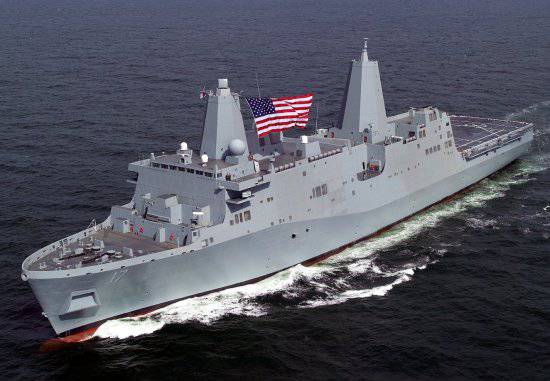
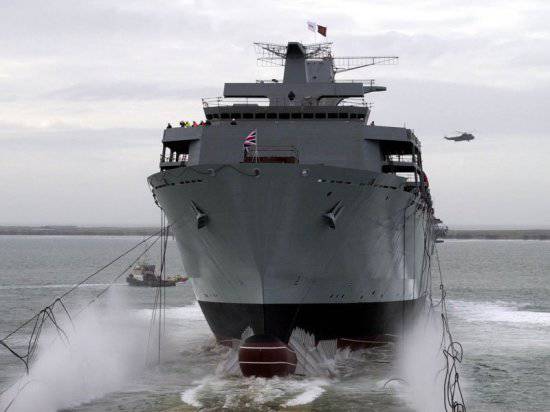
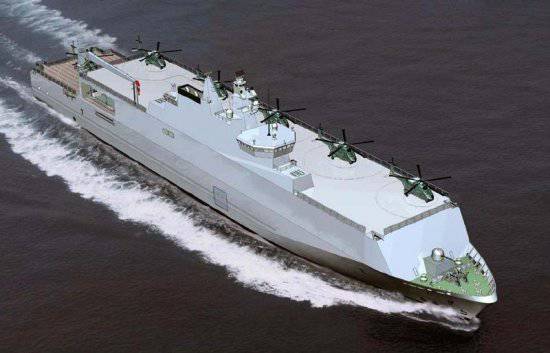
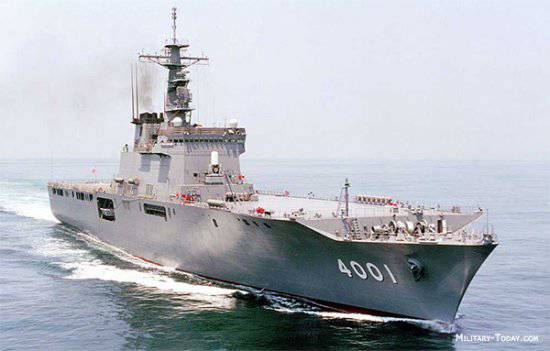
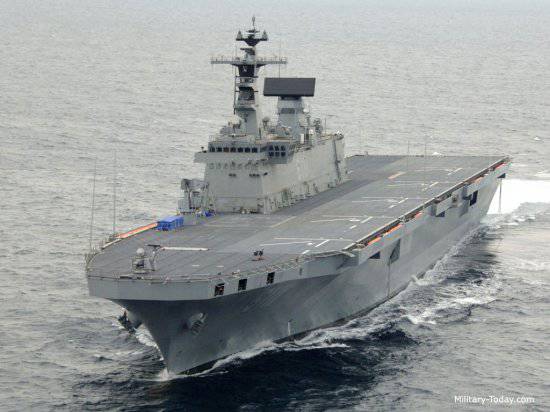
Information